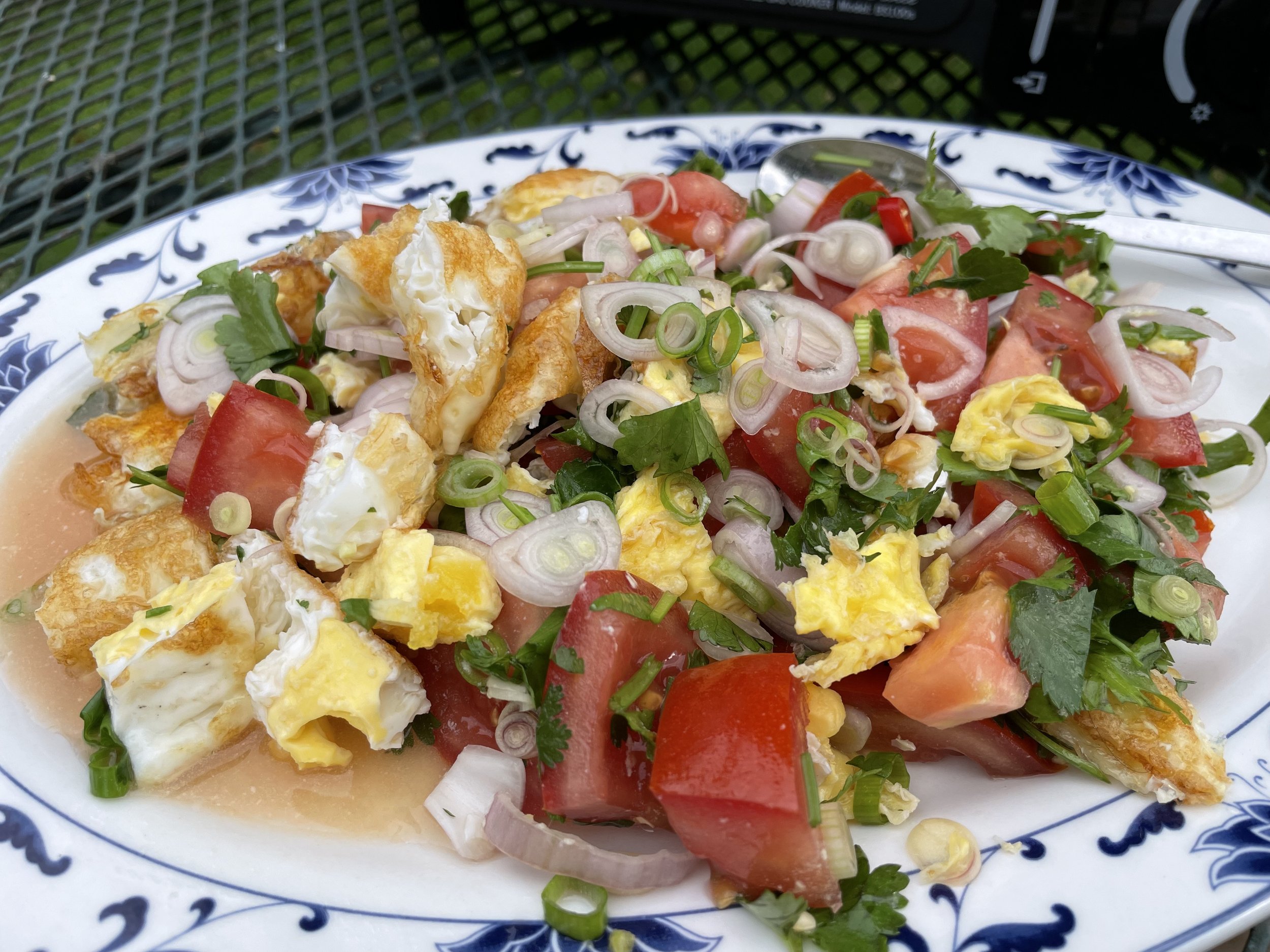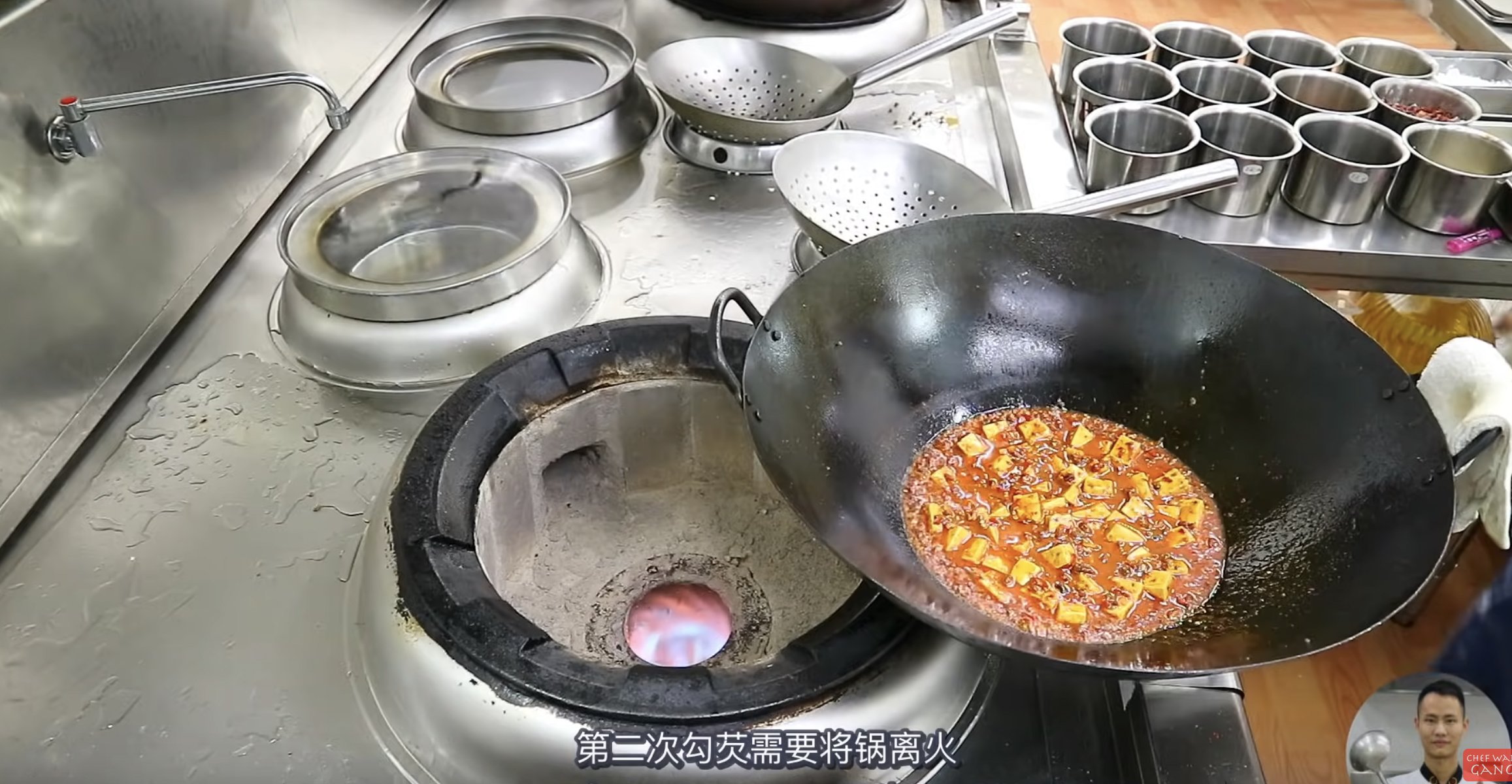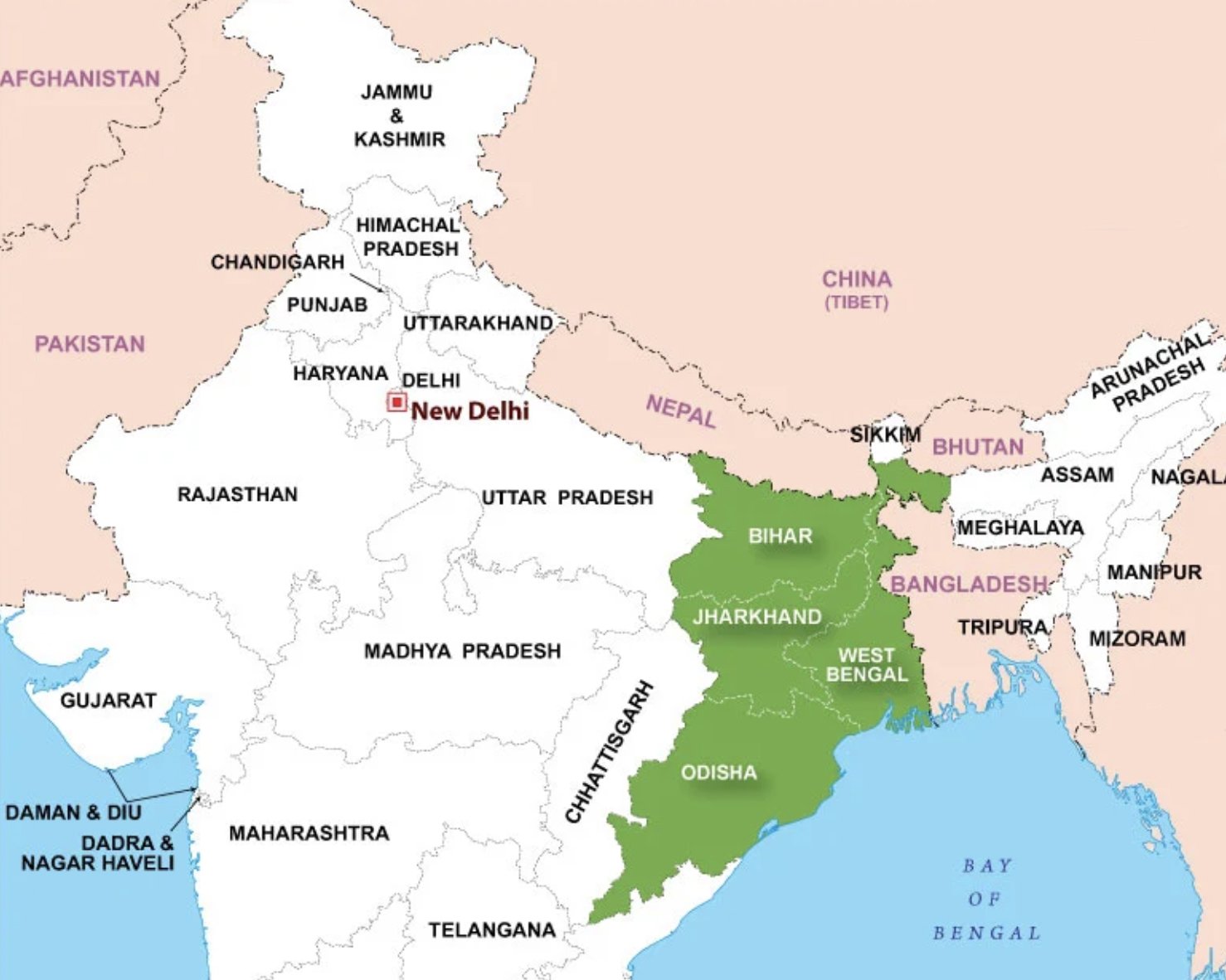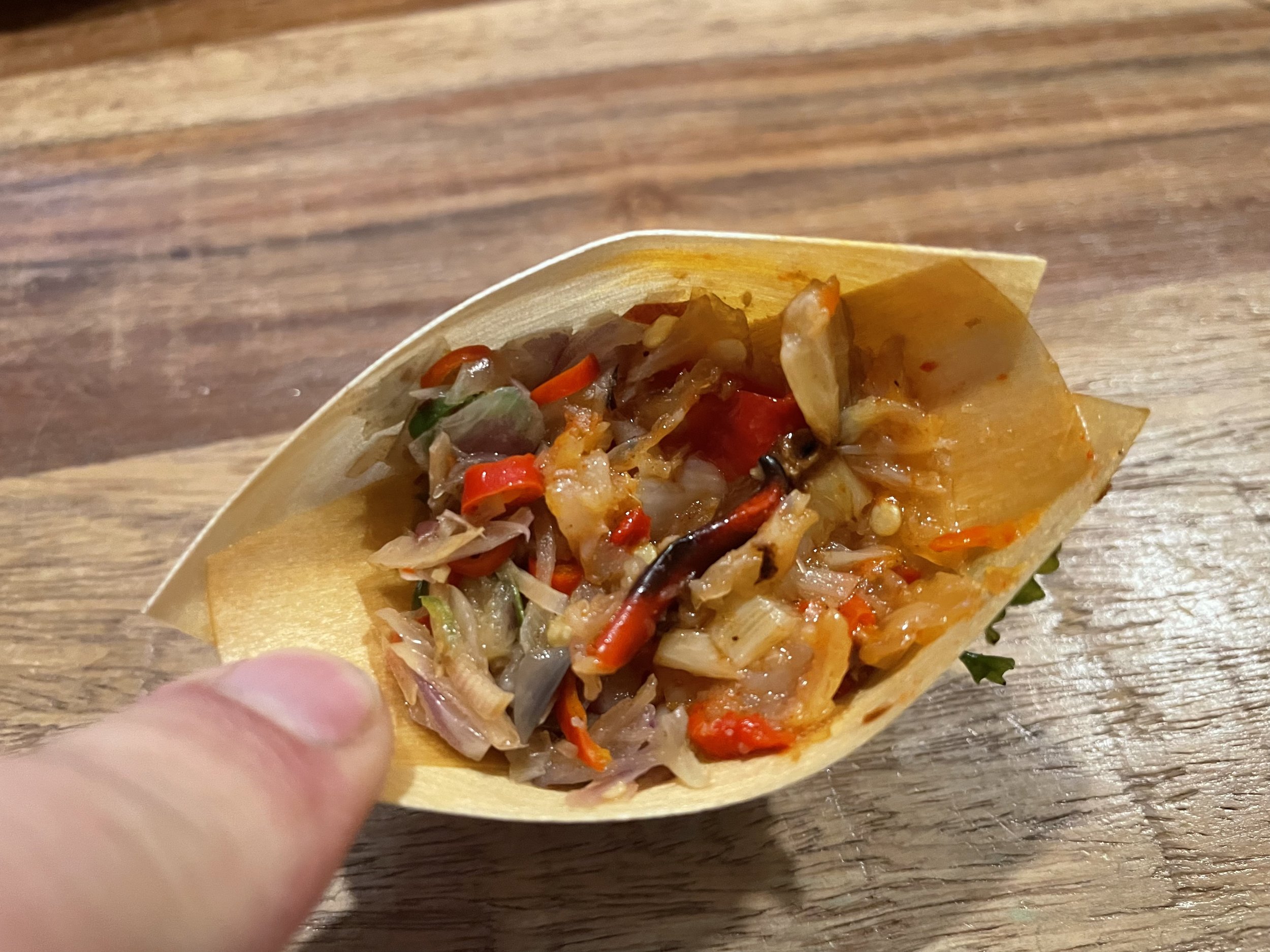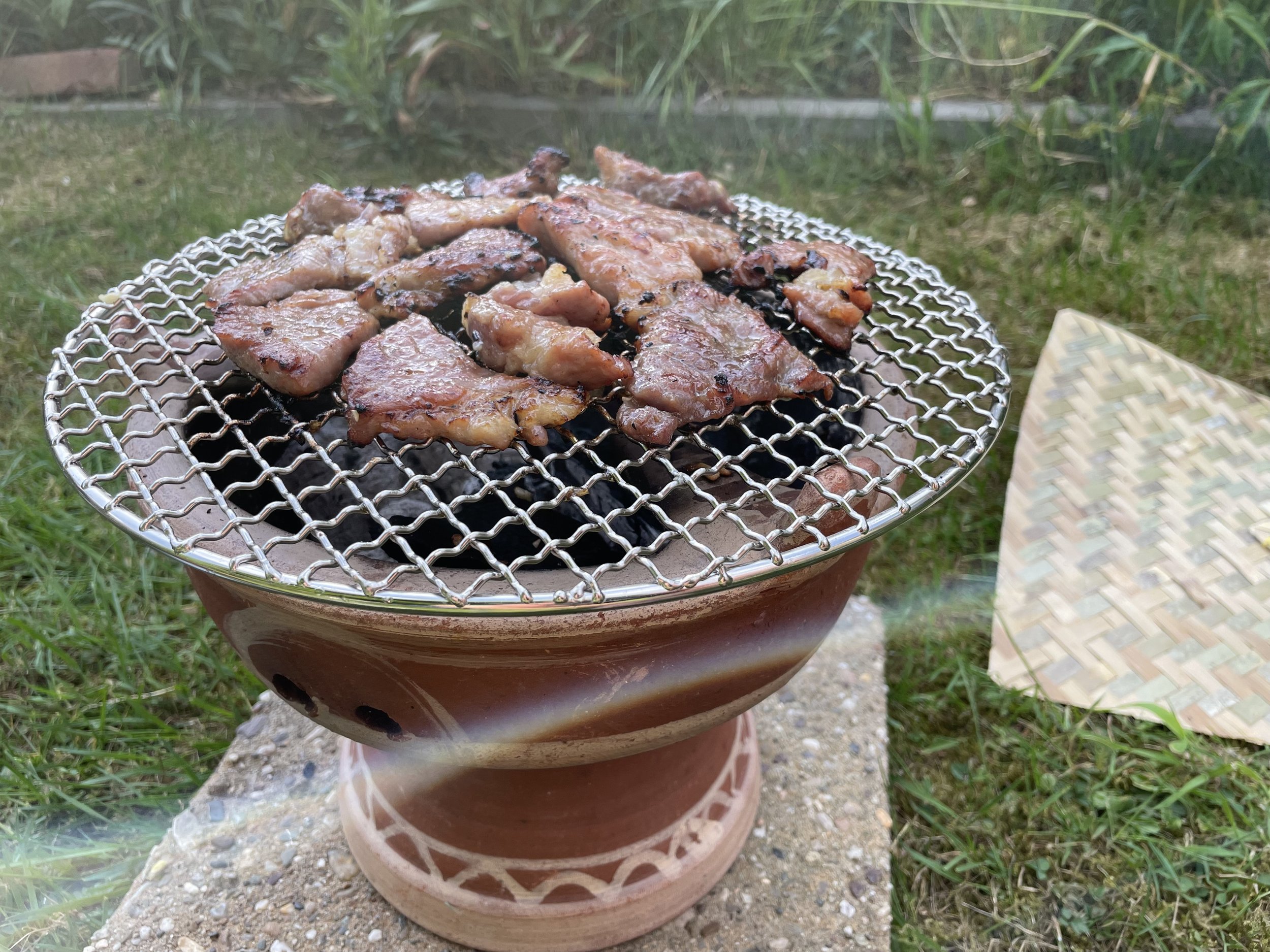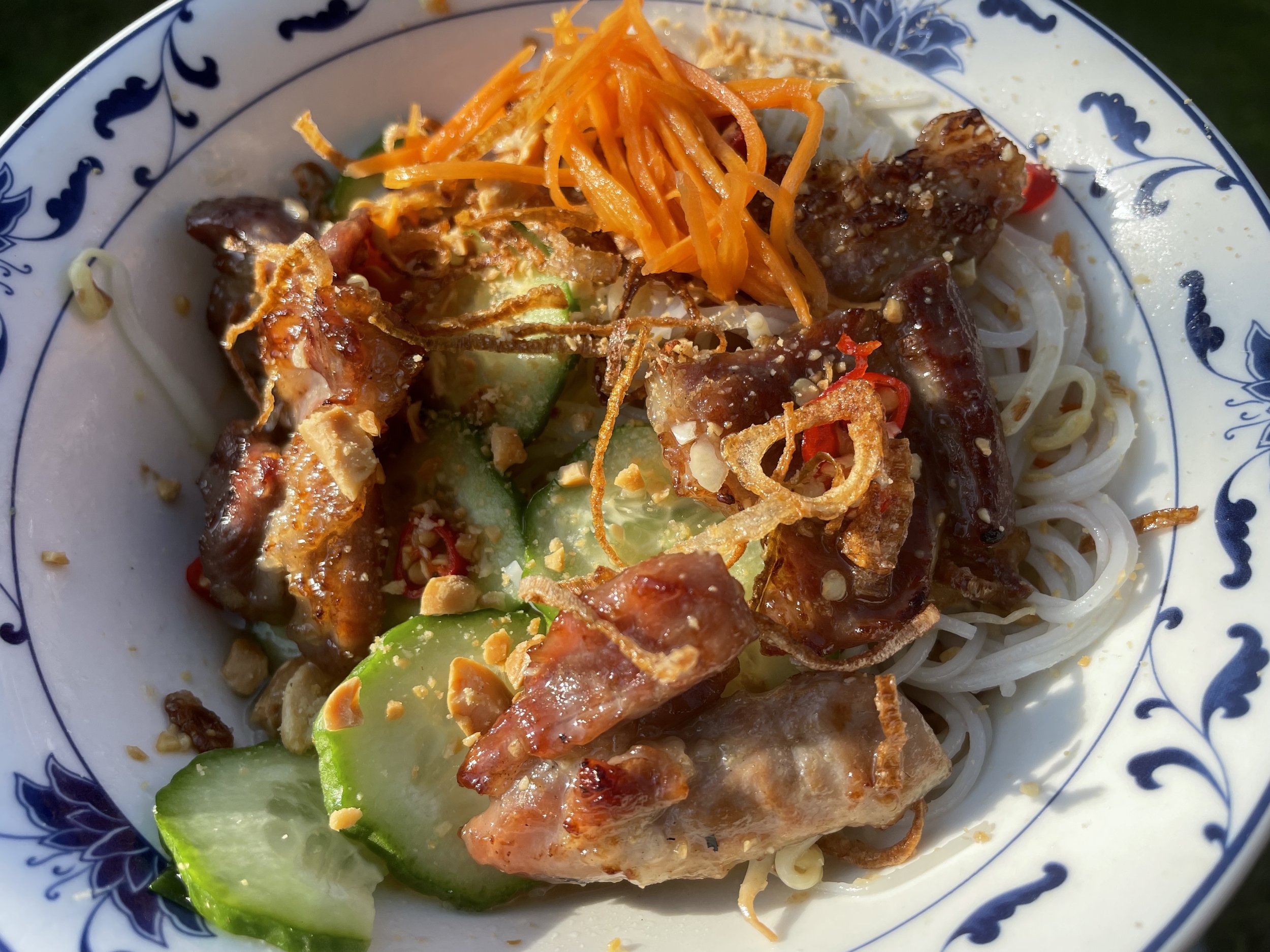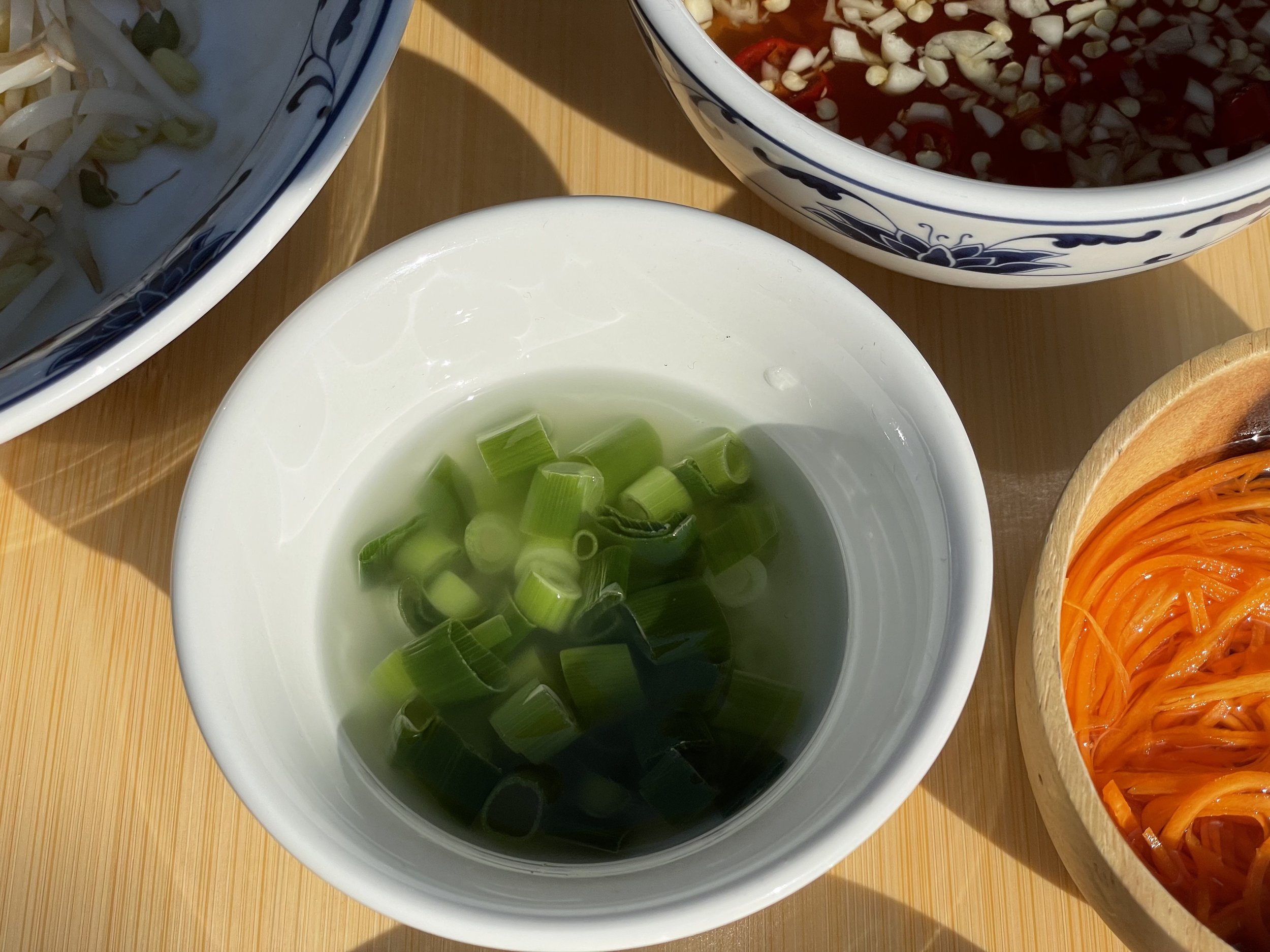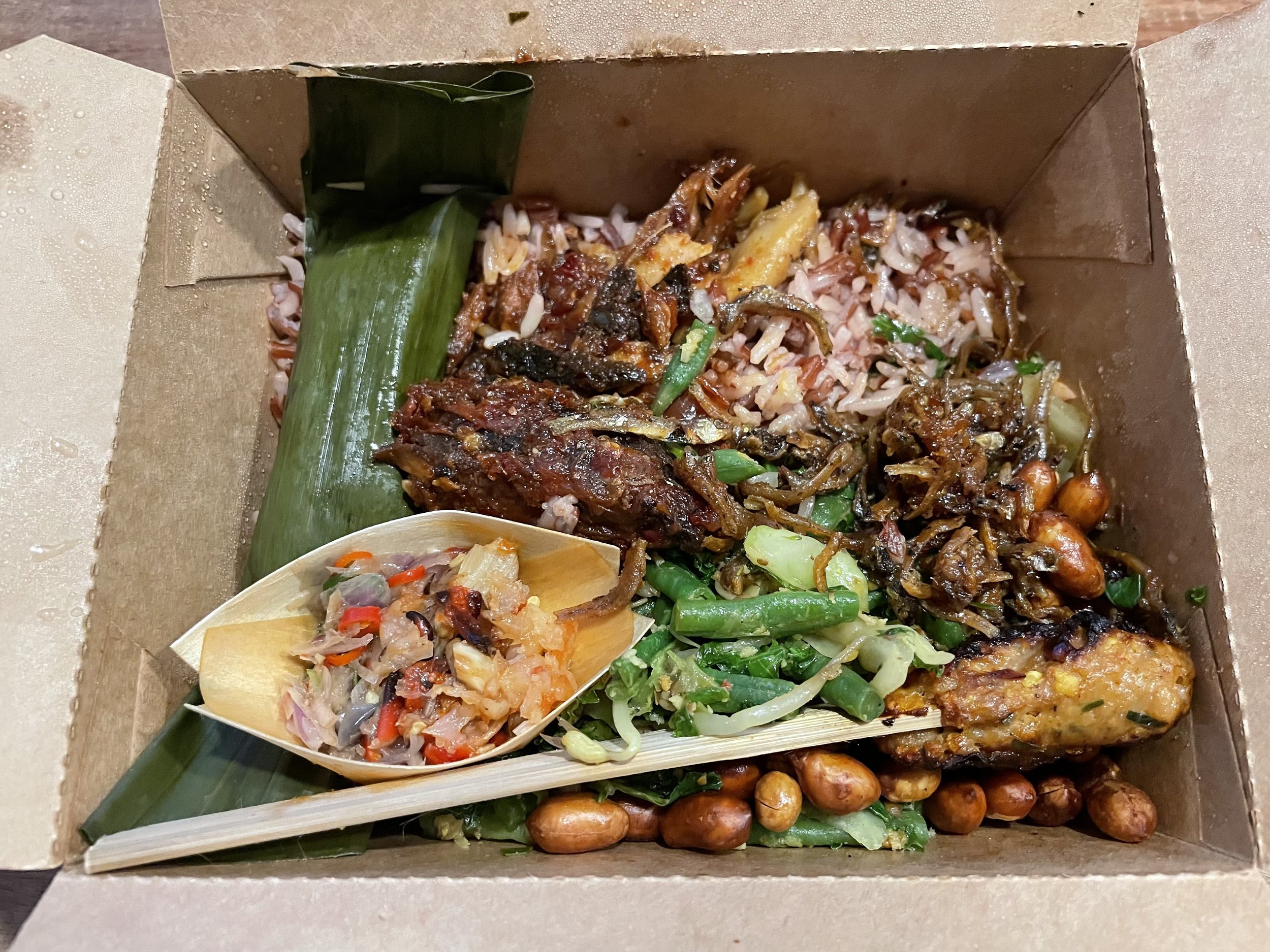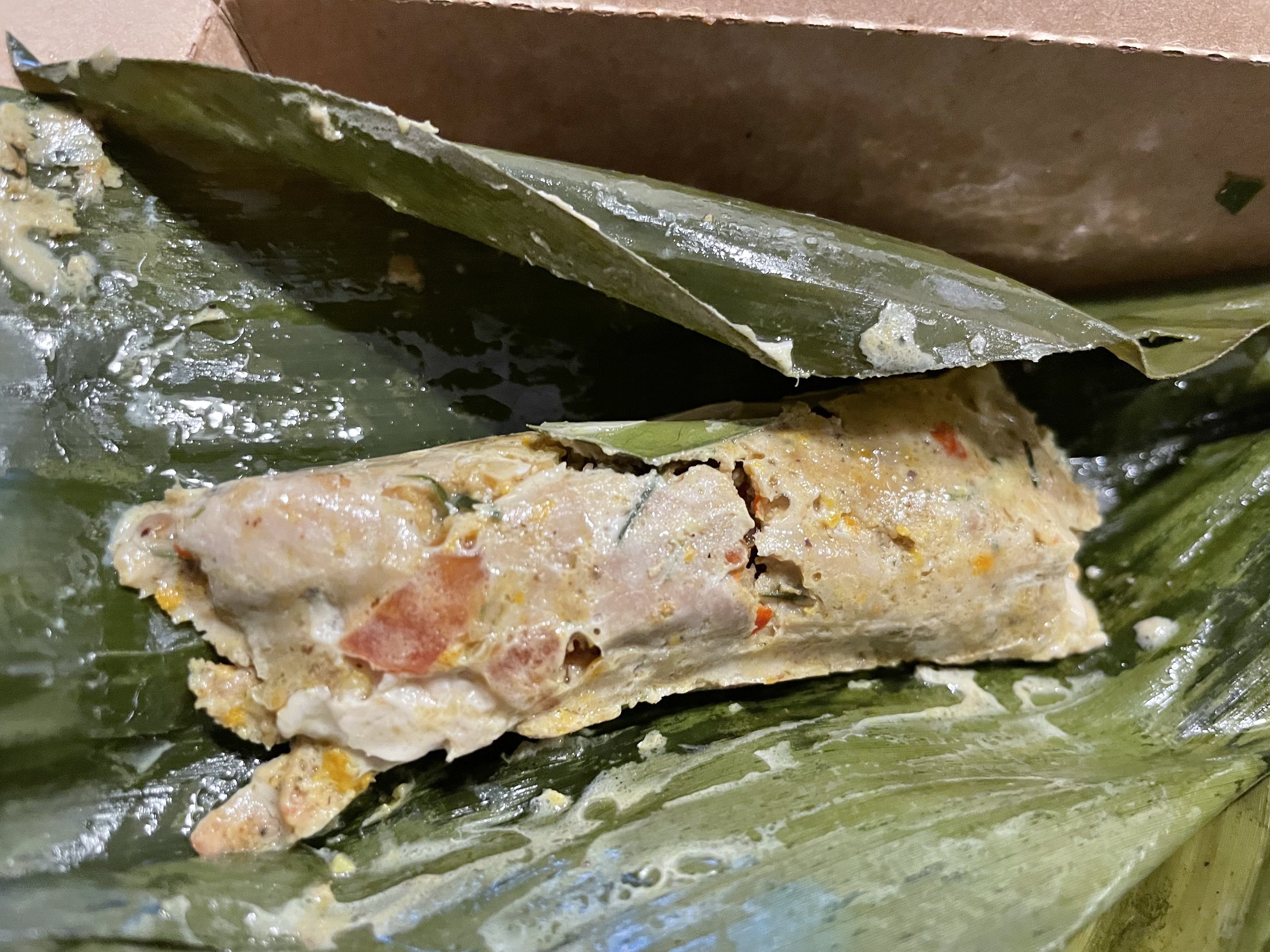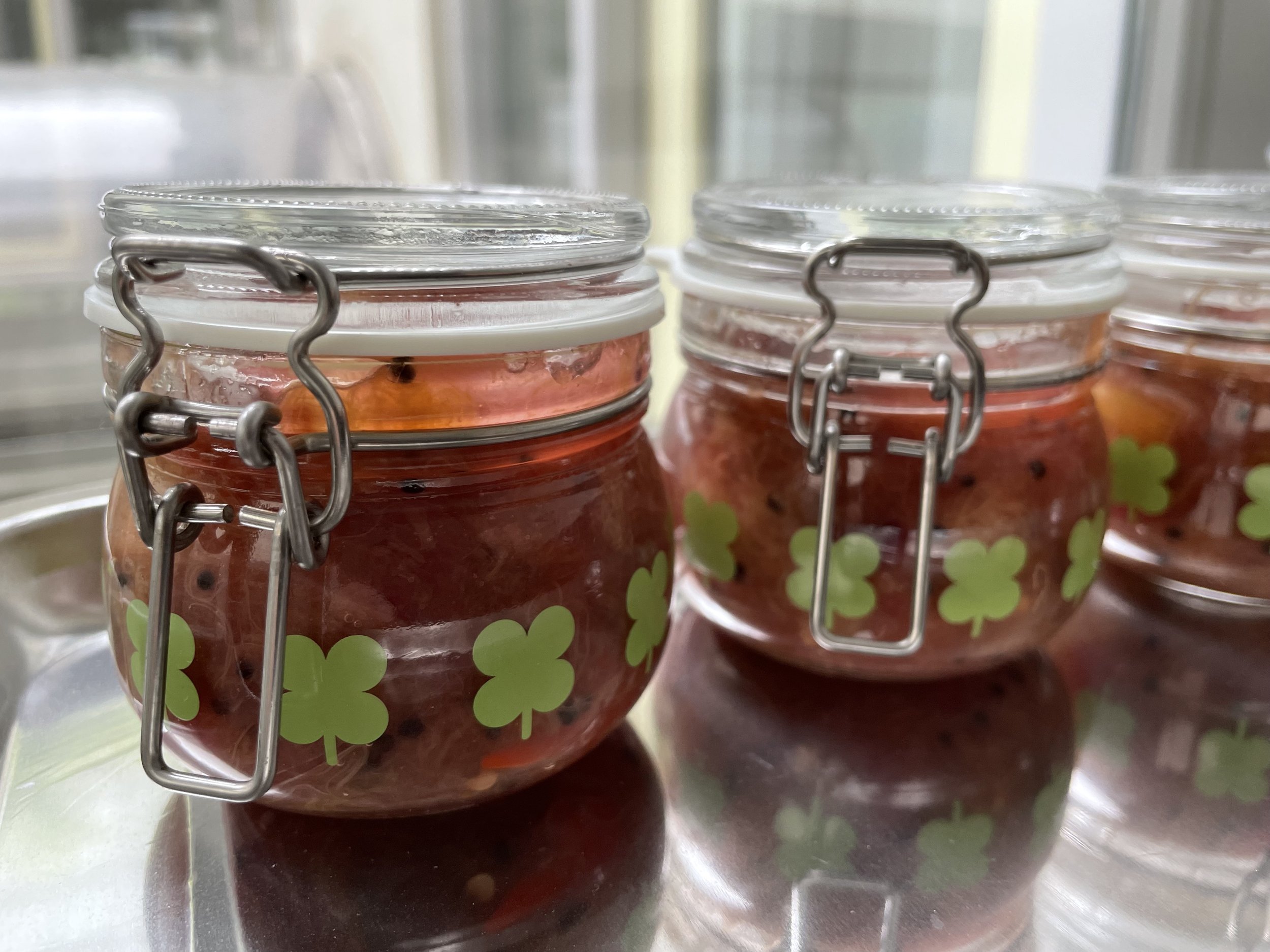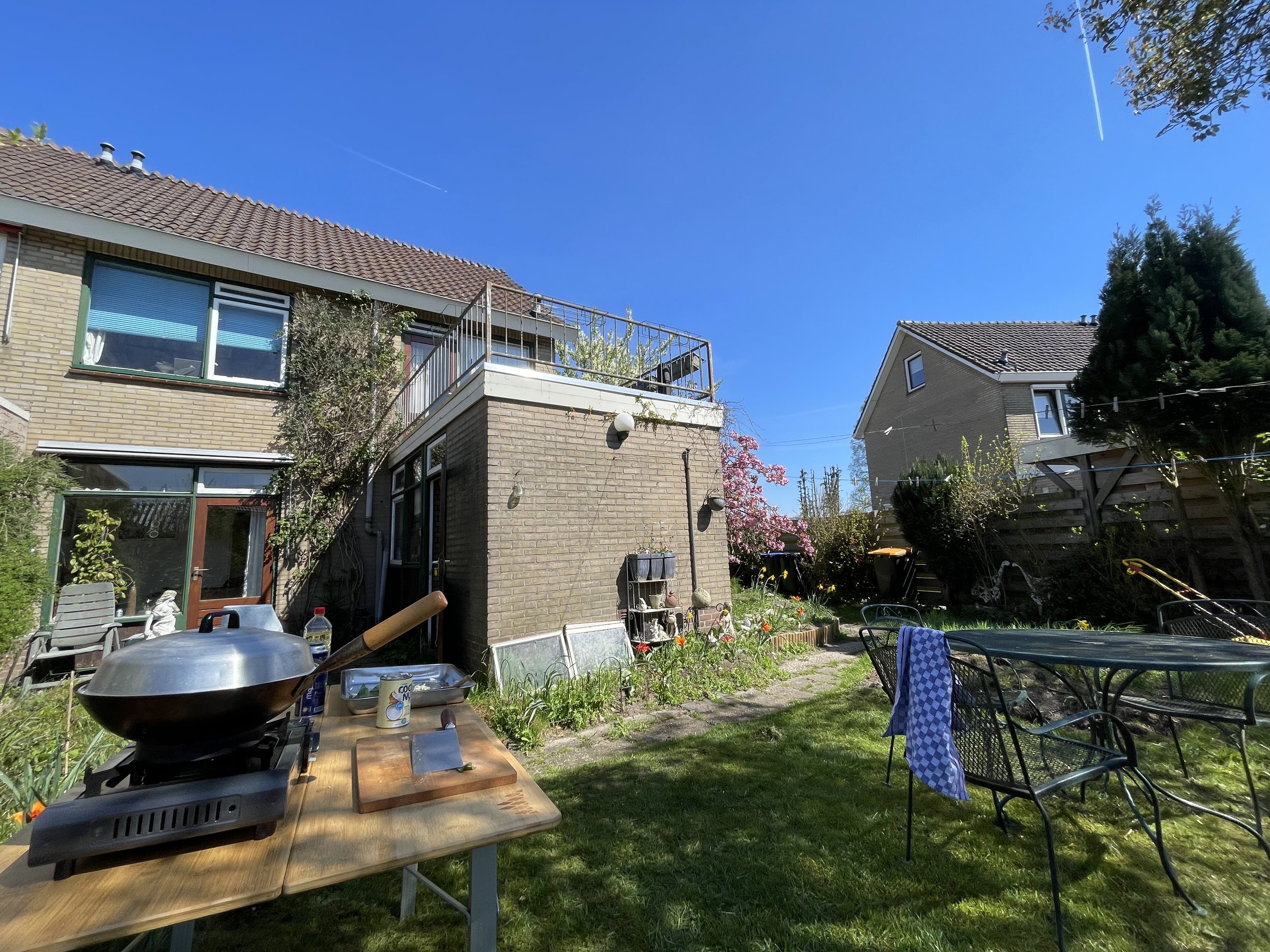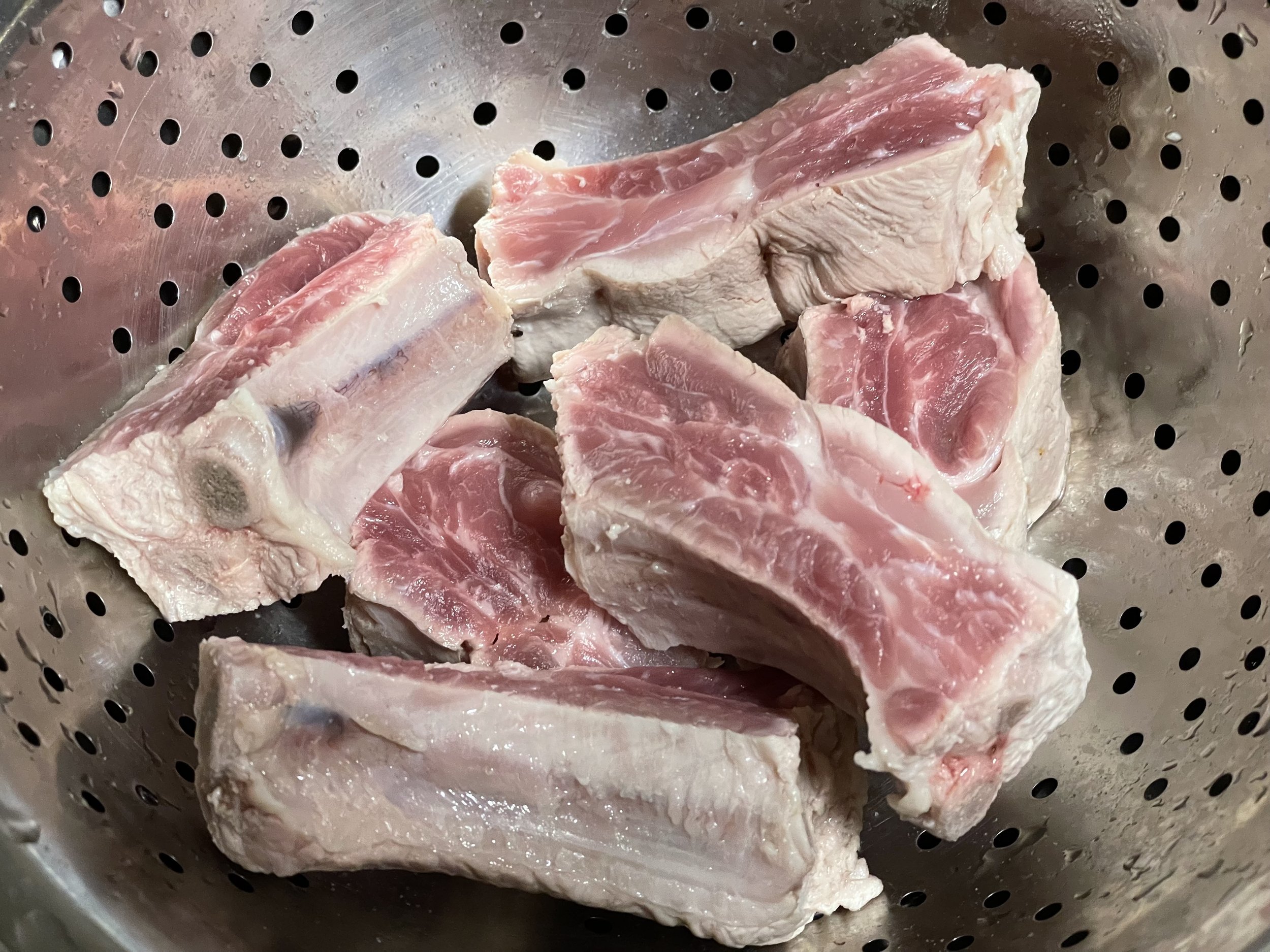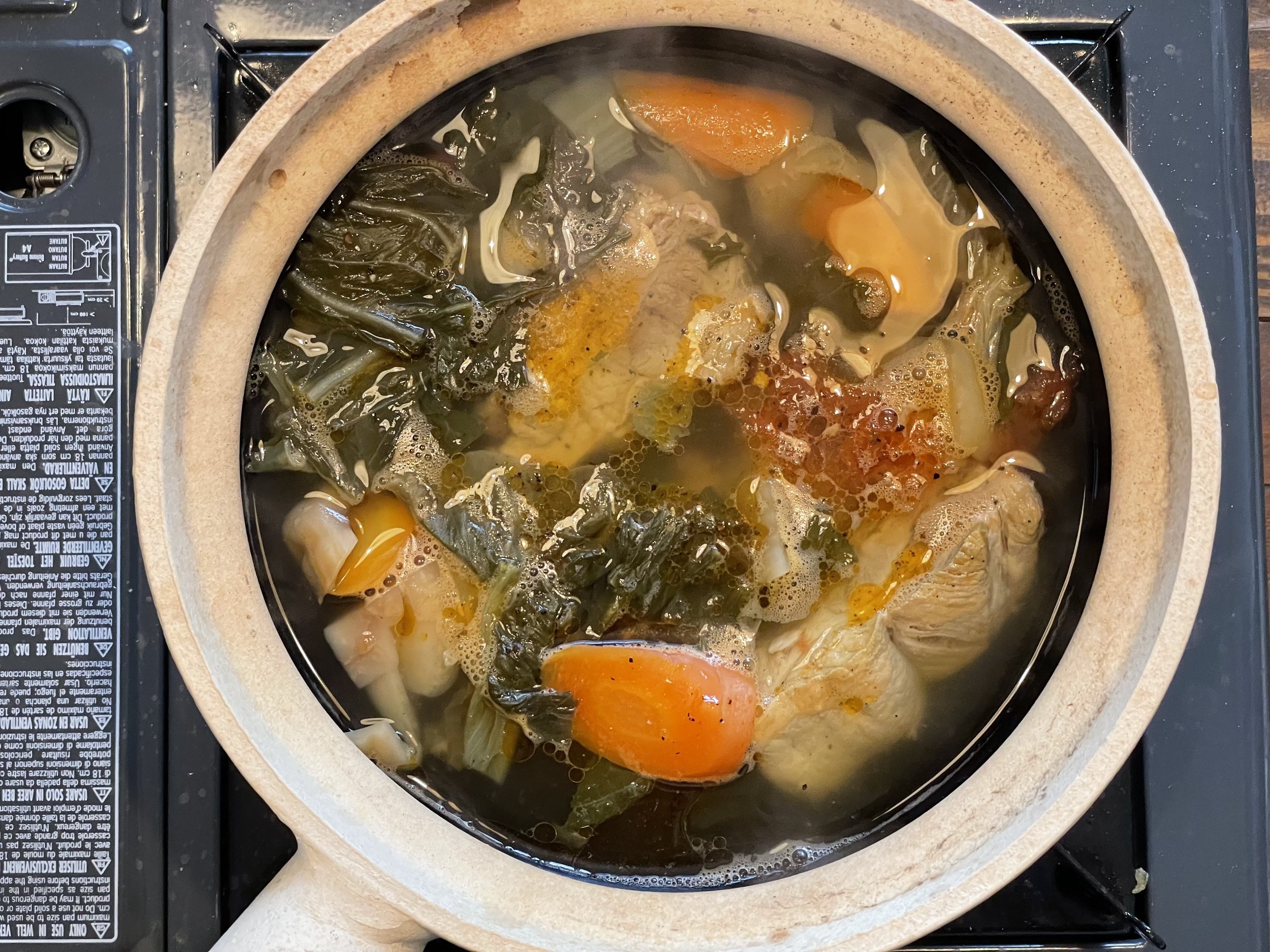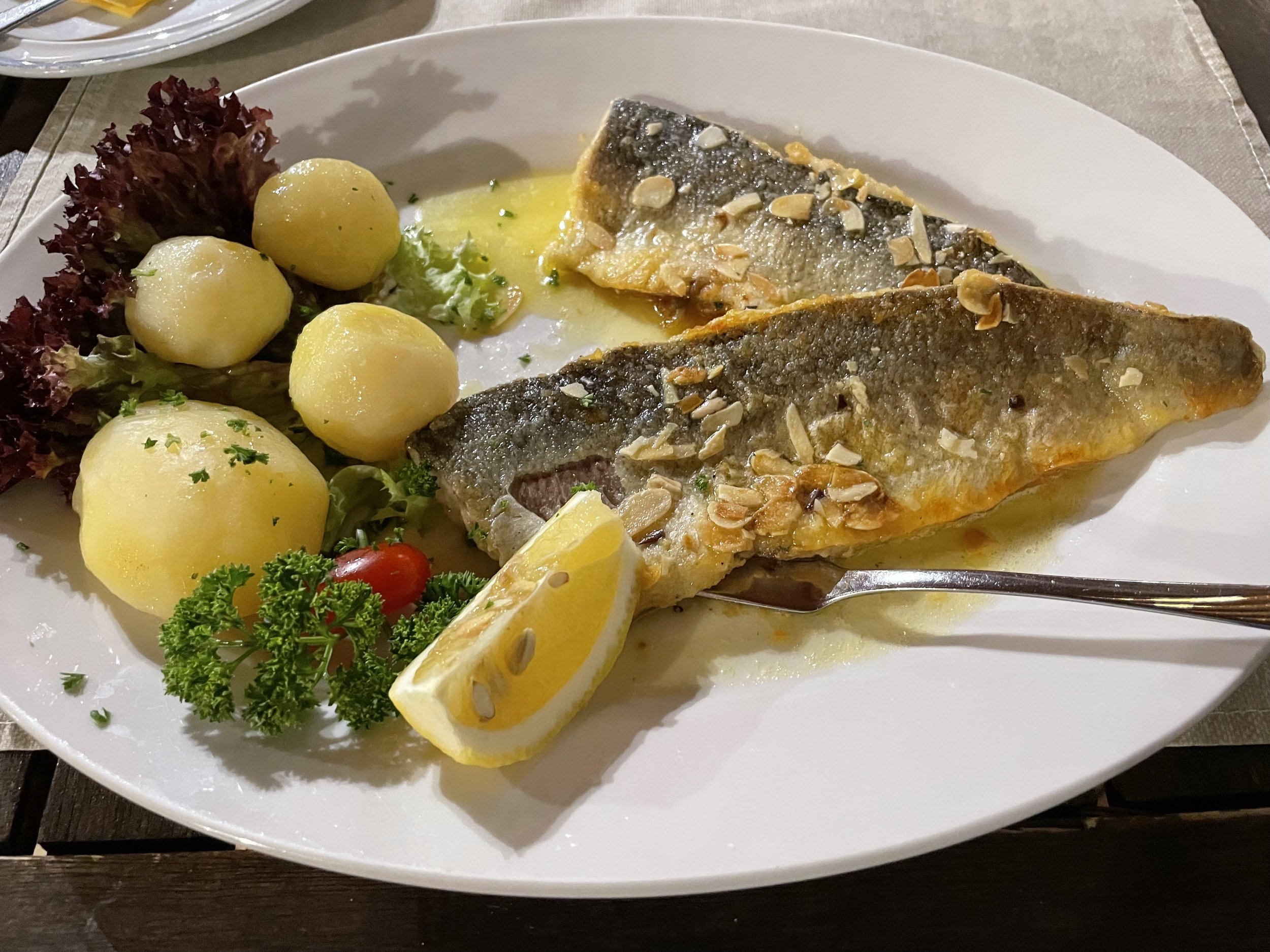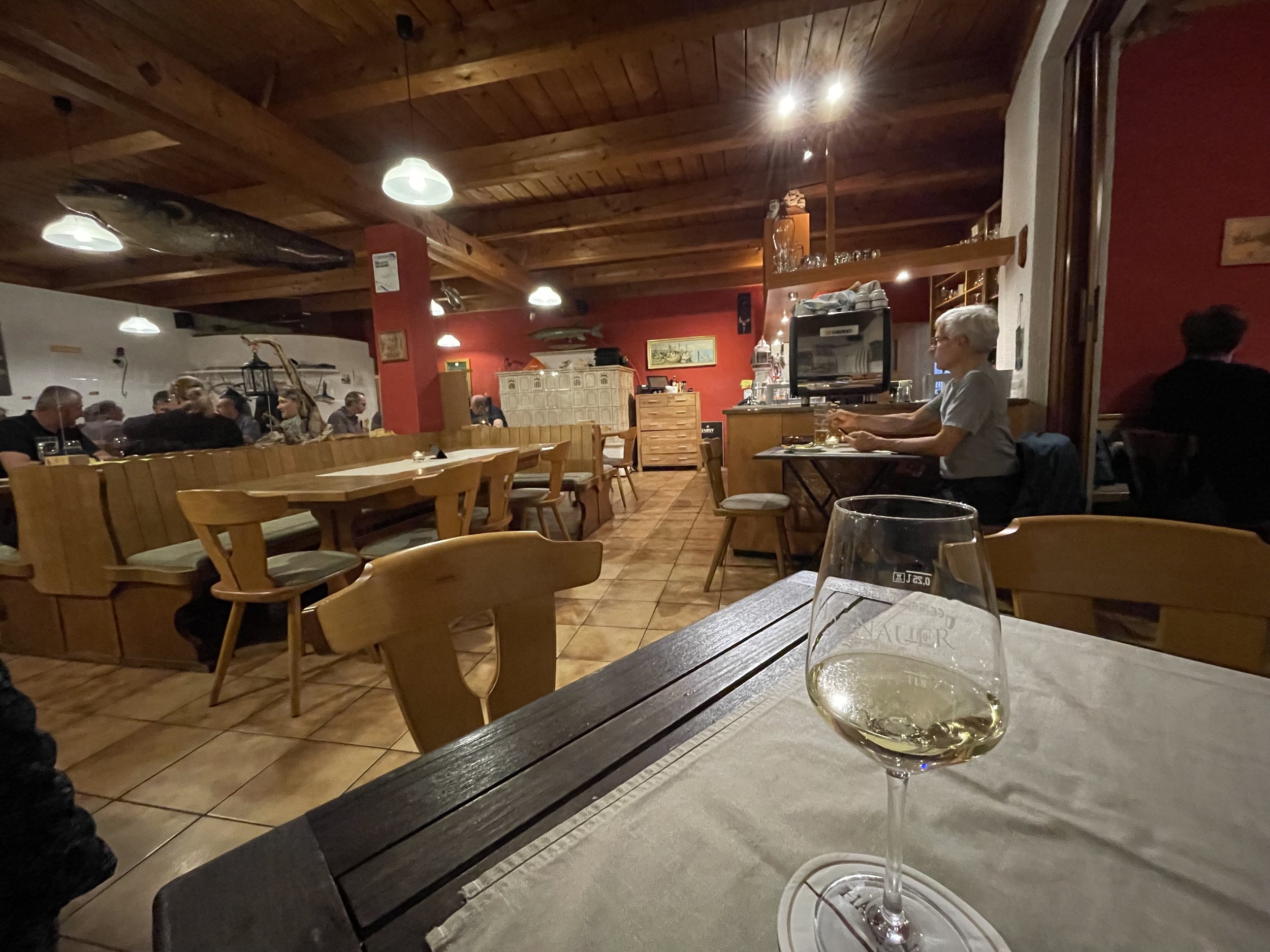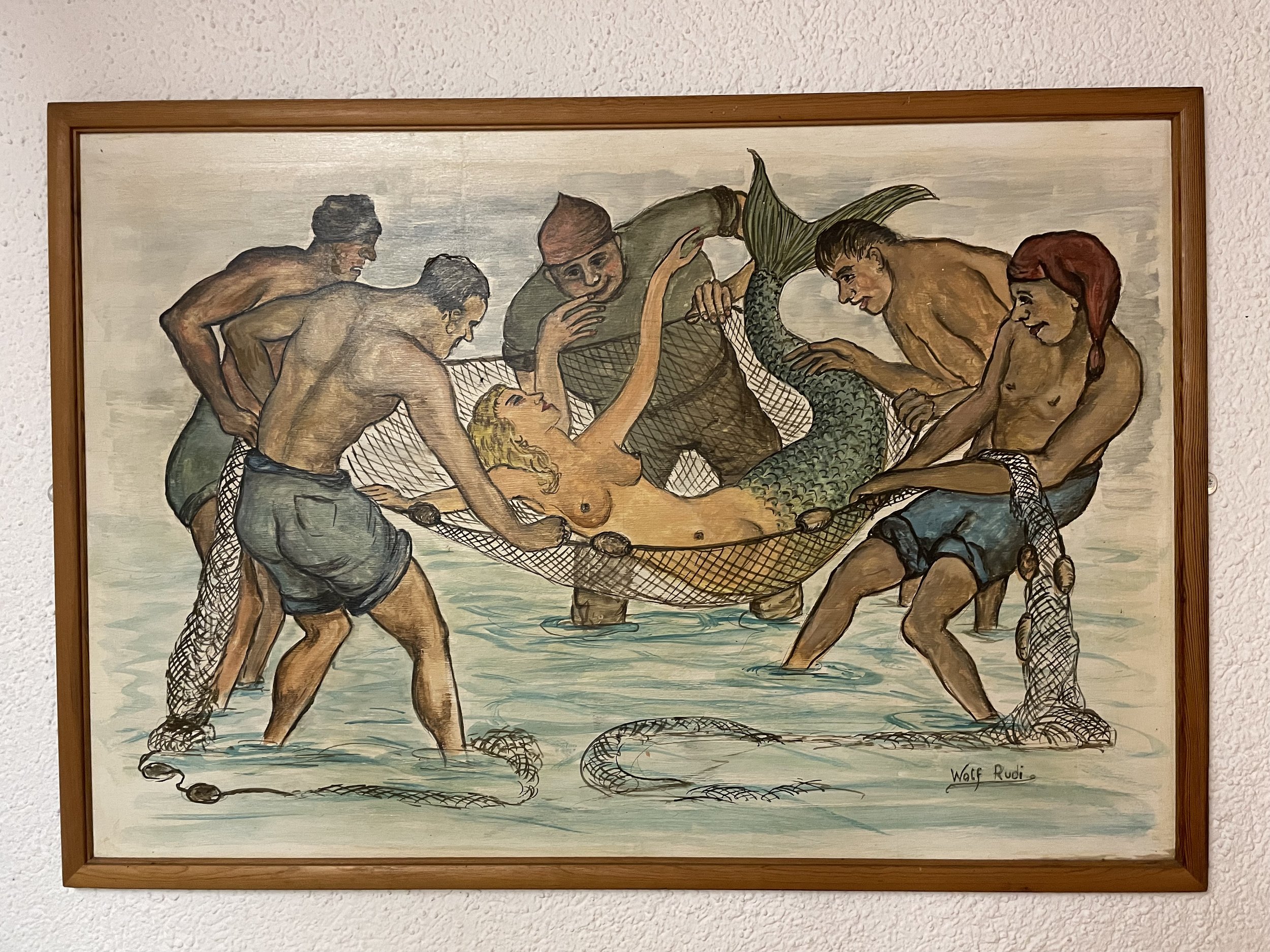Souvlaki
When I was seventeen my first journey without my parents took me to Greece with my friend Roger Overall. We didn’t drink a drop of alcohol nor did we party. I remember eating souvlaki, which was relatively cheap and ubiquitous. Ever since, I thought souvlaki was made of lamb. Only now I learned that souvlaki is mostly made of pork, the cut between the rib eye and the belly (the loin), which contains about 30% fat. This cut is hard to find in The Netherlands. I had to settle for a piece of pork neck.
If you google the recipe for souvlaki in English you will find a lot oil based marinades claiming to be “authentic”. I dug deeper and found a recipe on the YouTube-channel Grill philosophy which reminded me of what I had tasted that summer of 1986.
The below quantity is for 2 kilo of meat. I had to divide everything by four to adjust for my 400 gram of pork neck.
24 gram sea salt
2 gram black peppercorns
1 tsp summer savory
3 gram powdered sugar (not any other type of sugar)
150 ml water
Pound the peppercorns and coarse sea salt with a mortar and pestle and dissolve everything in the water. Massage the solution into the meat.
From there on you just have to grill the skewers. Before the first turn sprinkle some smoked paprika powder on the souvlaki. Serve old style with just some bread. The version with pita and tzatziki is a recent addition.
No oregano in this souvlaki but summer savory.






















